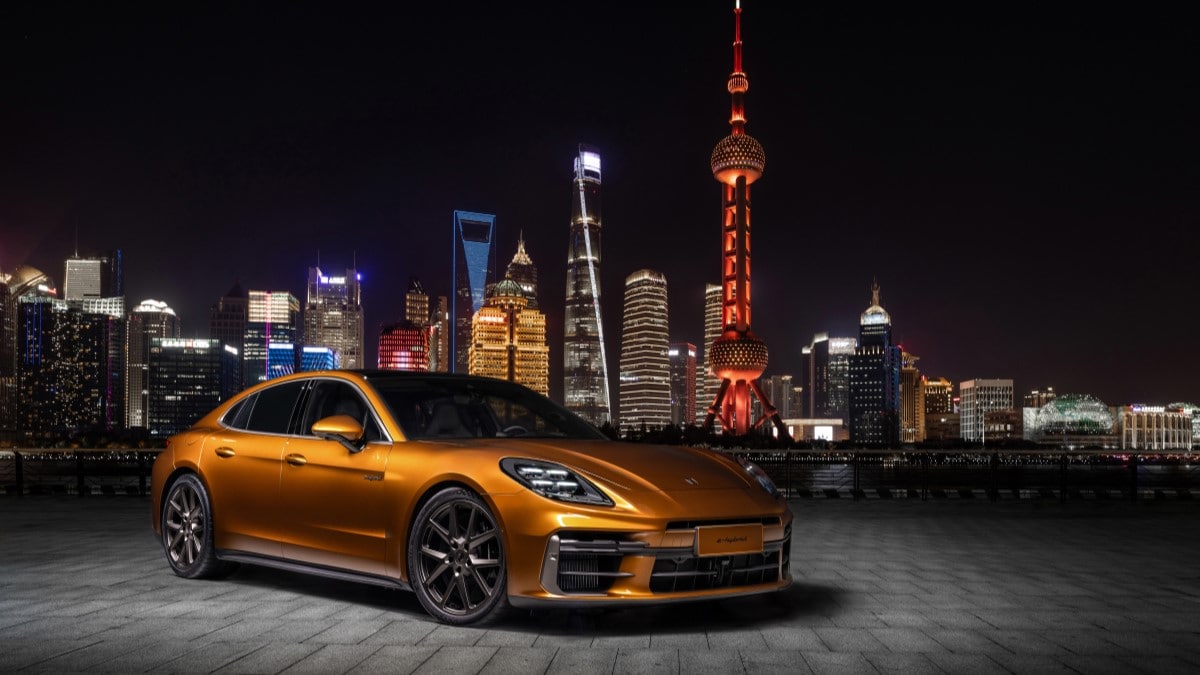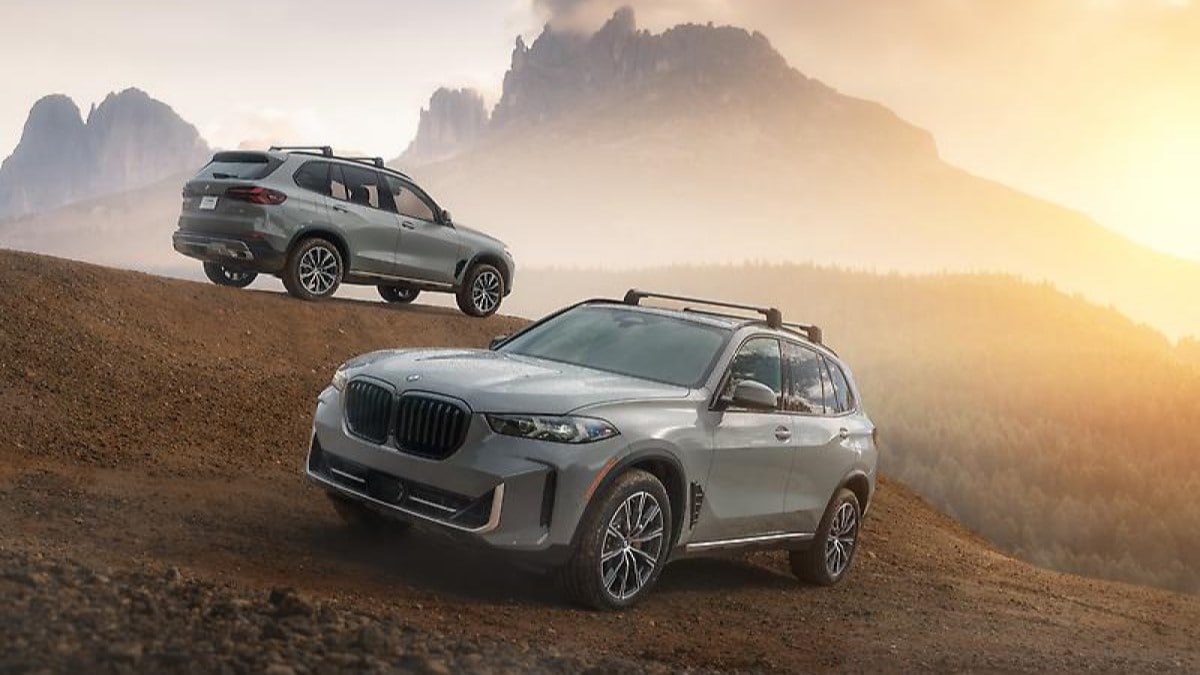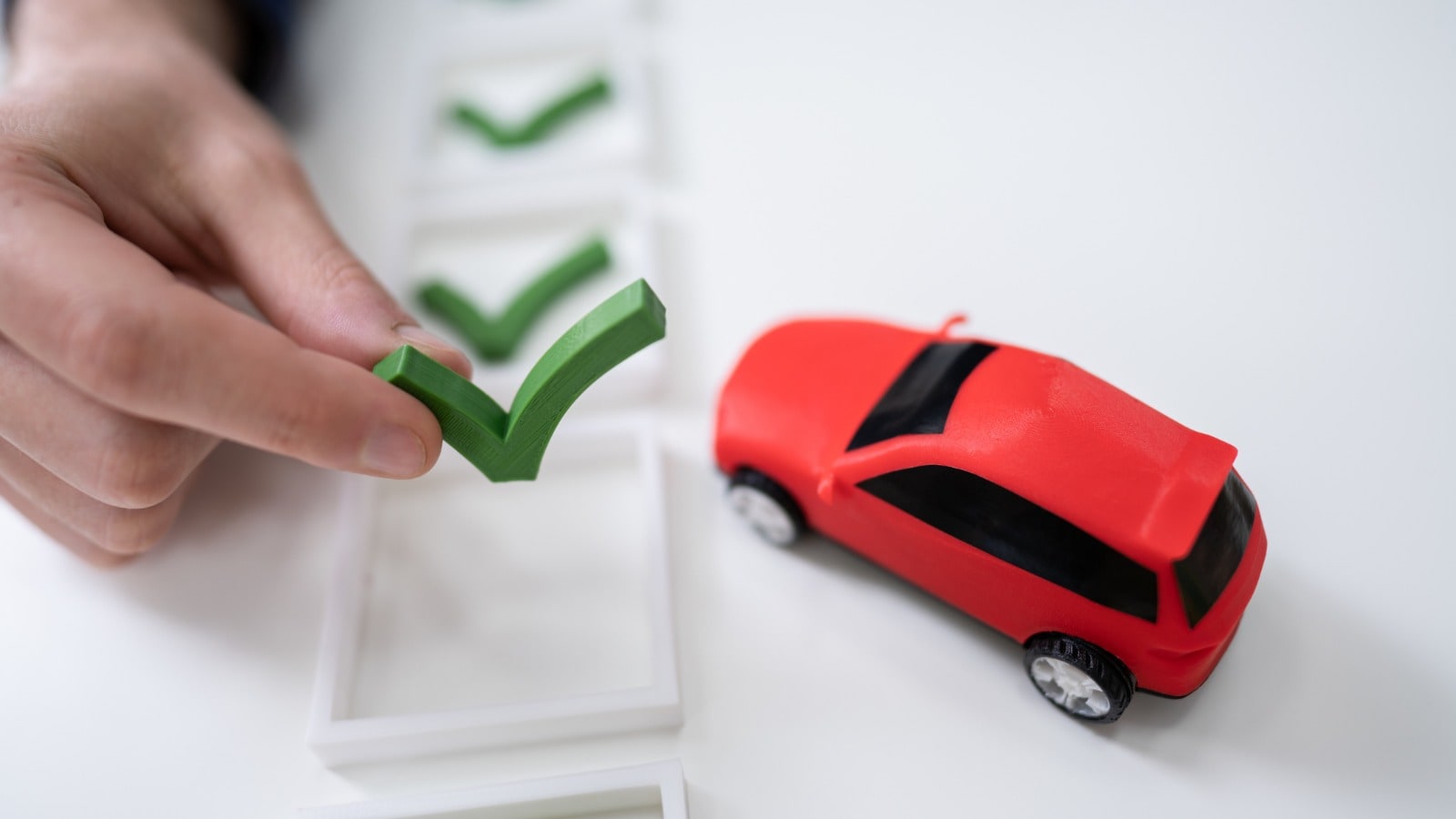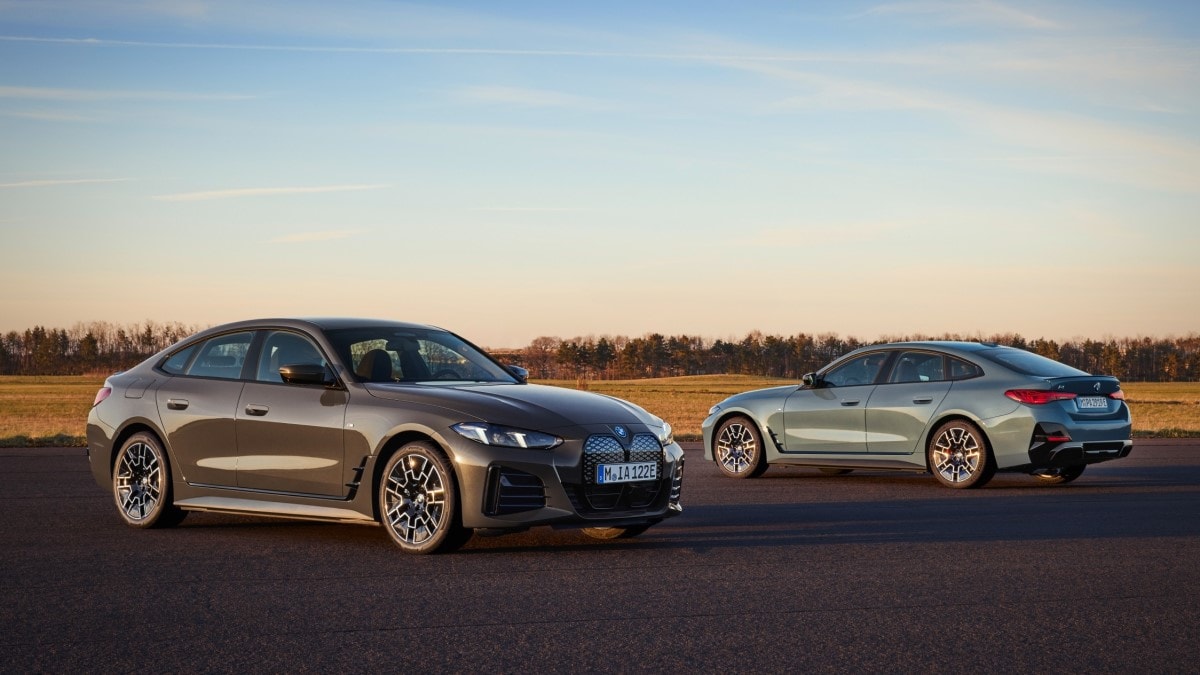The Porsche Panamera has always been a remarkable car. From the moment it began as a rumor, it seemed to defy logic – a company known for some of the world’s most capable lightweight sports cars was going to build an enormous super-luxury sedan to take on the Mercedes S-Class and BMW 7-Series? But Porsche did it with style, creating a monster capable of track-day performance and CEO-in-the-back luxury.
How do you improve on that?
With a suspension system that makes the big car’s weight surf over its wheels by leaning against the forces of a turn, it turns out.
Porsche says the 2024 Panamera is a redesigned model, but that’s stretching definitions a bit. The third-generation Panamera uses the same platform as the second, updated slightly. Bodywork is a subtle evolution over the outgoing 2023 Panamera. But the interior is all new, the powertrains have been updated, and the suspension isn’t just new — it’s full of new ideas.
At launch, Porsche will have three models available for order. Prices start at $99,900, not including the $1,650 delivery fee. Porsche hasn’t named pricing for all models, and we should note that the 2023 model tops out at nearly $200,000 before options.
V6 or Hybrid V8 For Now
The entry-level, rear-wheel drive (RWD) Panamera and the all-wheel drive (AWD) Panamera 4 use an updated version of the turbocharged 2.9-liter V6 found in last year’s car, now putting out 348 horsepower (23 more than before). It’s good for a 5-second zero-to-60 sprint in RWD and 4.7 seconds in AWD.
The Panamera Turbo E-Hybrid uses a 4.0-liter twin-turbo V8 with an electric motor integrated into the 8-speed PDK dual-clutch automatic transmission (DCT). It puts out a total of 670 horsepower. That’s 20 less than the outgoing model, but torque is up by 44 lb-ft to 685, so it won’t feel any slower. Sixty comes in just 3 seconds flat.
Porsche plans four different plug-in hybrid (PHEV) versions but hasn’t said when they will become available.
But the new car’s best mechanical trick is that suspension we’ve been teasing.

Two Suspensions to Choose From
Regardless of trim, every model gets active air suspension as standard equipment. The new setup uses two chambers and two valves for more significant variation between comfort and sport modes.
But optional is what the company calls Porsche Active Ride. It uses active shock absorbers combined with an electrically operated hydraulic pump. Porsche says it “generates a use case-specific volume in the dampers that can then quickly and very precisely build up pressure between the wheels and body of the car to counter and absorb any impacts generated by road imperfections.”
The new trick? In its sportiest mode, it deliberately “overcompensates” during hard maneuvers to prevent pitch and roll. That keeps the car’s body flat “even during heavy braking, steering, and acceleration inputs.”
It sounds a little like the famous Citroen suspensions of old, sped up to the digital age. It should make the heavy car (remember, this thing has executive-comfort rear seats) feel more Porsche-like.
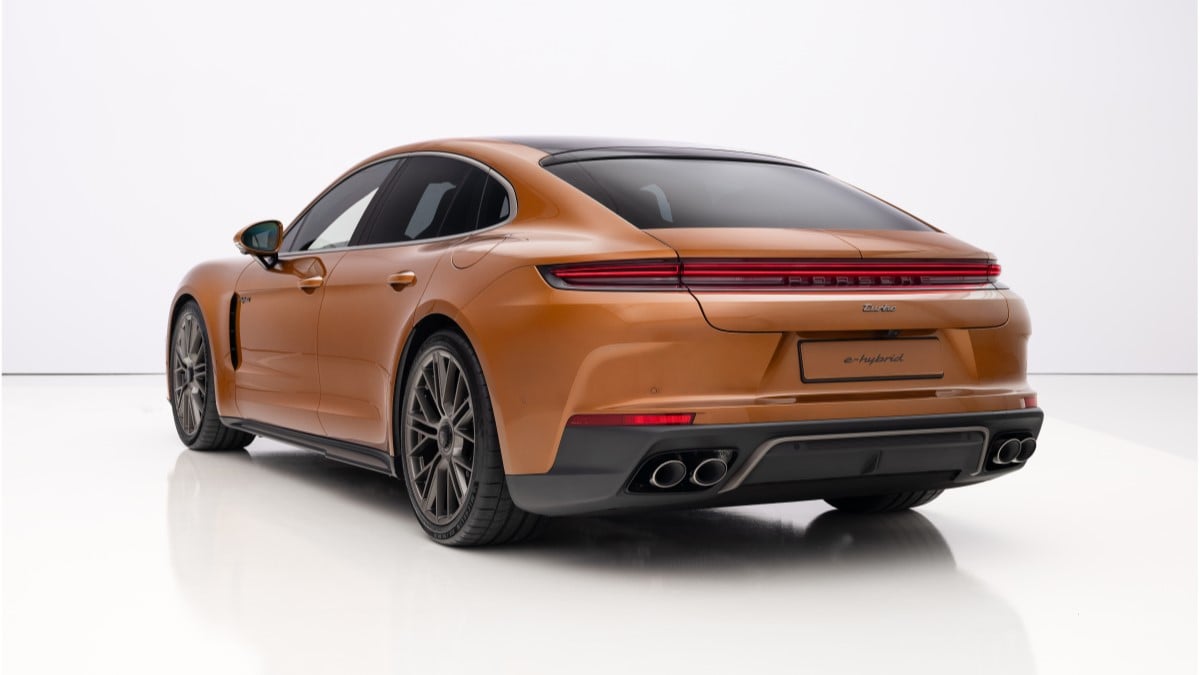
Evolutionary Look
If anyone knows how to update a look subtly, it’s the company that has produced many generations of the 911 since 1963 and never left you wondering what car that was.
Park the 2024 Panamera next to the 2023 model, and you’d know they were different, but you’d have a hard time explaining how. It’s the curve (or lack thereof) of an air intake, the angle of a character line in the hood, and the cant of a brake vent. The headlights are a bit more angular, and the line of the fenders sits higher. But it looks more like a tailor-made a few adjustments than like a designer started over.
Turbo models will get the new “turbonite” gunmetal trim, and badging Porsche is debuting on this car.
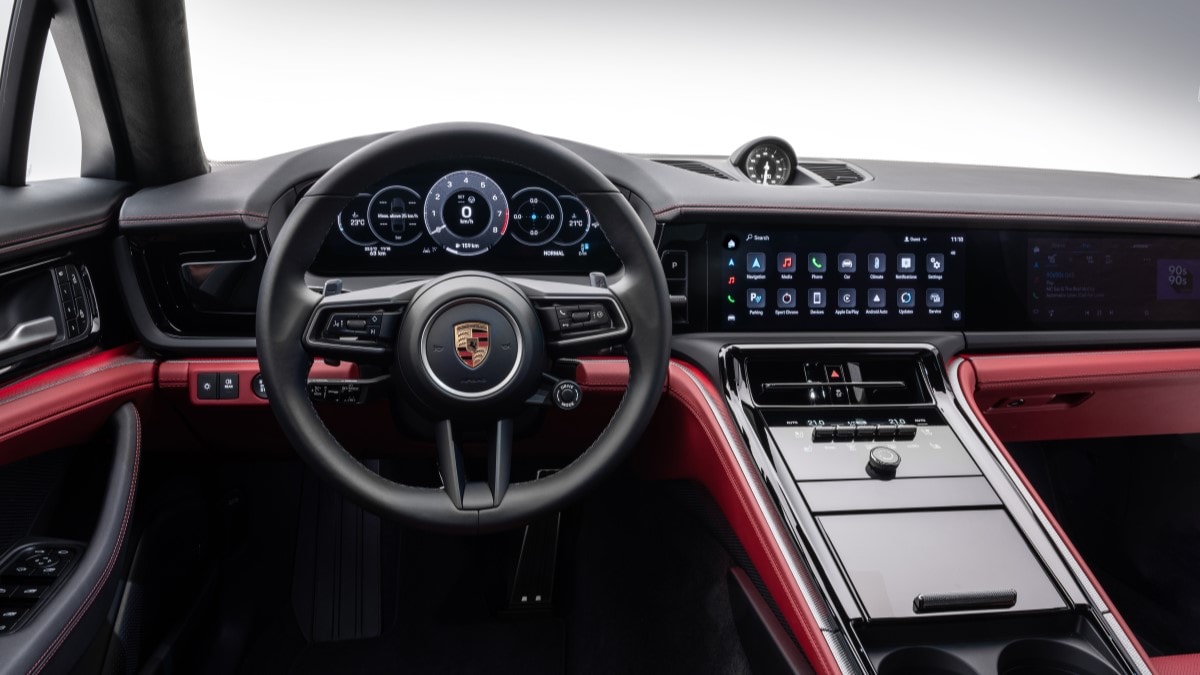
More Screens, Less Switchgear
Prior generations of the Panamera have rivaled a 747 for buttons and switches. That’s not a complaint – they were all logical enough that it didn’t take flight school to master. But the dozens of buttons and the bathtub-like height of the divider between the driver and passengers have always been the interior’s defining features.
The buttons are mostly gone. The cockpit-like separation remains.
The driver faces a curved, 12.6-inch display. The driver and passenger share a central touchscreen. Optionally, passengers get their 10.9-inch screen, like the one in the recent Cayenne redesign. Porsche says it can stream video or “show performance data of the vehicle” if your passenger wants to co-drive, rally-style.
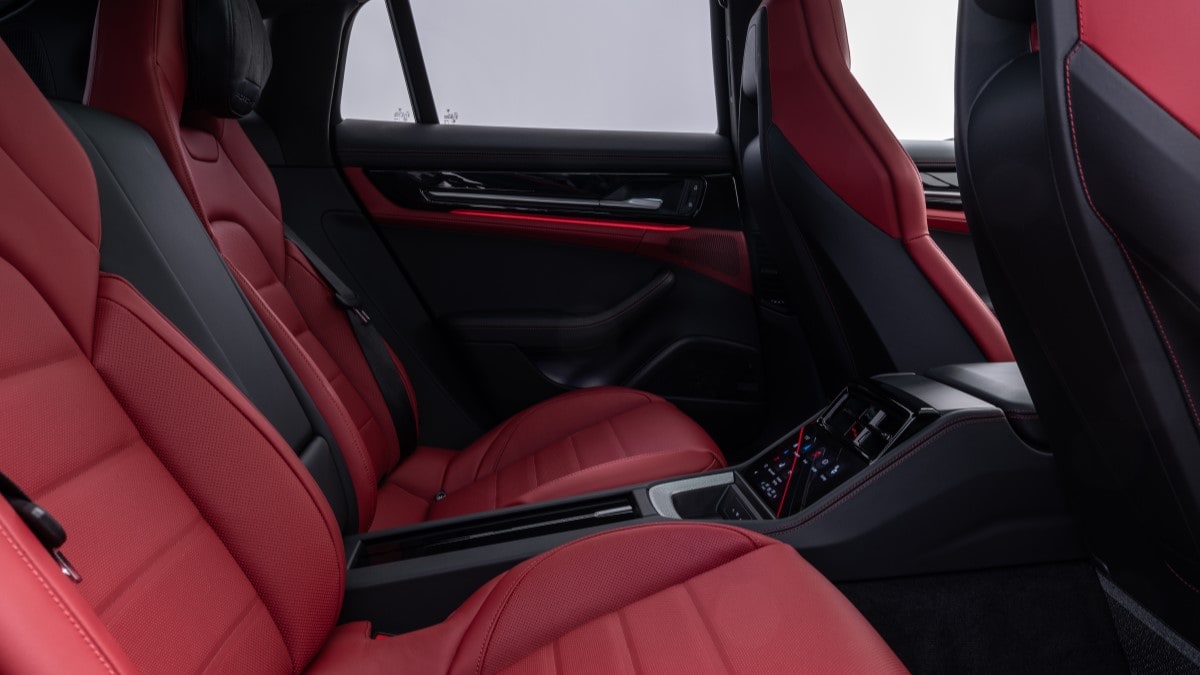
Porsche has worked with Apple to integrate Apple CarPlay with the car’s controls. “Functions such as climate control, seat massage, and ambient lighting can be activated directly via Apple CarPlay or Siri,” Porsche says. Android Auto is also available but has not yet been integrated.
Drivers can also get out and park the car with phone controls, Porsche says, in “certain types of parking spaces and garages.”

